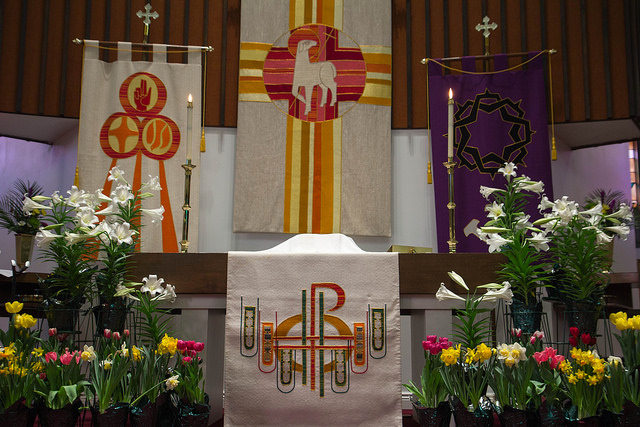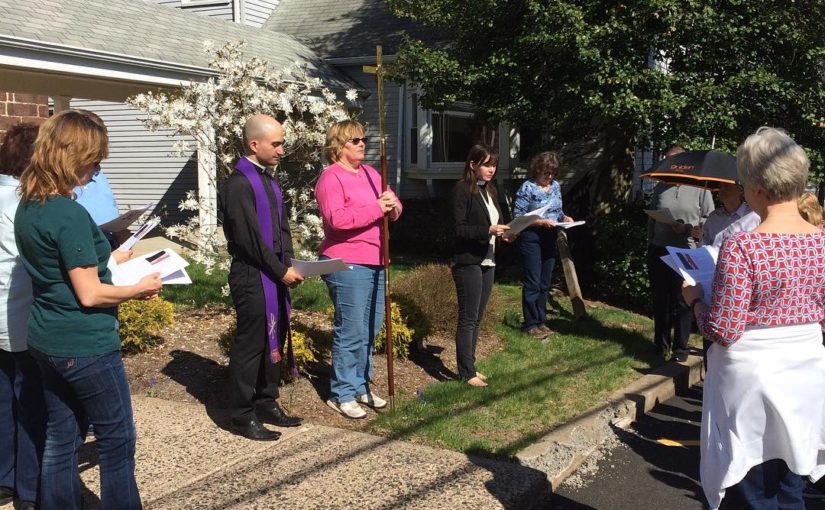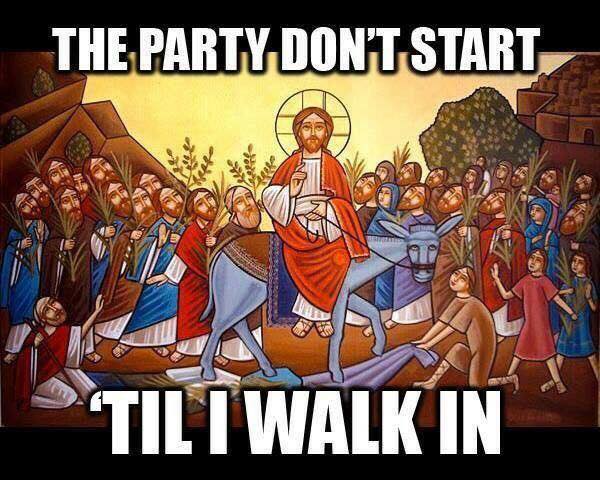When it was evening on that day, the first day of the week, and the doors of the house where the disciples had met were locked for fear of the Jews, Jesus came and stood among them and said, “Peace be with you.” After he said this, he showed them his hands and his side. Then the disciples rejoiced when they saw the Lord. Jesus said to them again, “Peace be with you. As the Father has sent me, so I send you.” When he had said this, he breathed on them and said to them, “Receive the Holy Spirit. If you forgive the sins of any, they are forgiven them; if you retain the sins of any, they are retained.” But Thomas (who was called the Twin), one of the twelve, was not with them when Jesus came. So the other disciples told him, “We have seen the Lord.” But he said to them, “Unless I see the mark of the nails in his hands, and put my finger in the mark of the nails and my hand in his side, I will not believe.”
A week later his disciples were again in the house, and Thomas was with them. Although the doors were shut, Jesus came and stood among them and said, “Peace be with you.” Then he said to Thomas, “Put your finger here and see my hands. Reach out your hand and put it in my side. Do not doubt but believe.” Thomas answered him, “My Lord and my God!” Jesus said to him, “Have you believed because you have seen me? Blessed are those who have not seen and yet have come to believe.” Now Jesus did many other signs in the presence of his disciples, which are not written in this book. But these are written so that you may come to believe that Jesus is the Messiah, the Son of God, and that through believing you may have life in his name.
John 20:19-31
My sermon from 2nd Sunday of Easter (April 23, 2017) on John 20:19-31. Listen to the recording at the bottom of the page or read my manuscript below. You should know that I modified the sermon, slightly, on the fly. I changed some of the tenses and where I put my pauses.
So who locked those doors? In our reading from the gospel according to John today, we know why the doors were locked. But we don’t know who did it. Many of the disciples of Jesus were together – in that room. All of them knew what happened to their rabbi, to their teacher. They were there when Jesus was arrested. They knew he died. And yet….many also knew that something had changed. John’s version of Easter morning involved disciples running to find the tomb empty and Mary Magdalene mistaking Jesus for the gardener. Some of the disciples, after they see the empty tomb, return to their homes. Mary, after Jesus meets her in the garden and calls her by name, went and told others what she saw. John’s Easter morning is full of movement. Everyone is rushing from one place to another and everyone is telling a story. The writing is so fast paced, no one has time to sit and reflect on what just happened. Instead, the empty tomb and the Risen Jesus is just experienced over and over again. Easter morning, according to John, is fast and furious and it doesn’t stop.
But in today’s reading, evening comes. Some of the disciples who spent the day rushing around are now together. We don’t know, officially, who is in that room. None of the disciples who see Jesus that first evening are even named. But let’s assume that the disciples in that room knew about the empty tomb and knew Mary’s story. And because the disciples here are unnamed, I think we’re invited to use our imagination and believe that all kinds of disciples are there. There are those in the room who were there at the start of Jesus ministry, those who met Jesus on the road and were impressed by his teaching and his faith, and those who shared a meal with him, were healed by him, and knew that he was different. These disciples knew Jesus. They now know the fullness of his story. They know that Jesus is raised from the dead and out there in the world so as the sun sets, they shut the doors, and lock them.
Now, as the sun goes down, there are things the disciples need to do. Torches need to be lit, candles placed on tables, and windows shut to keep the cold night air at bay. They need to do what we do when the day fades and night moves in. But the disciples are also doing something more. The disciples in that room are preparing for a new day. As Jewish people, they follow the Jewish calendar. New days don’t start at midnight or when the sun rises. For them, a new day begins at the moment when an old day ends. The day of Easter is about to close. The frantic pace and wonder of that morning is starting to fade. Now is the time to close the doors, secure the windows, and light some candles because something new is about to come.
So in the middle of these preparations to welcome a brand new day, someone gets up and locks the doors. We don’t know who does that. But we do know why they do. They are afraid. The disciples don’t know what the religious and political authorities might do now once night has come. Now, light and darkness are big themes in the gospel according to John. The light is always about being near to Christ, being in relationship with him. The shadow, the darkness, is a sign of being apart. When Judas left to go arrange for Jesus’ arrest, he went into the night. When Jesus was arrested, it happened at night. So the disciples, on this first evening after Easter, are afraid of what might happen next. They’re trying to keep themselves safe. They believe that the right kind of locked door will be able to stop the Roman Empire from coming in and doing to them what the Empire did to Jesus. That locked door does more than keep the night outside. It also walls them in. The walls and ceiling and doors of that little space become the limit where their light can shine. Because of their fear and what they know can happen out there, they choose to lock themselves in, creating a world for themselves that they think is safe. They believe they’re staying next to the light. They believe they’re keeping close to Christ. They can’t imagine anything but darkness being outside those doors. So Jesus does what they could not. He comes into that room from the outside, from that place of fear and terror and he goes through that door the disciples locked. The door was locked because the disciples knew the sun was setting. But they didn’t realize that a new day for the entire world started because the son rose.
As people, we’re good at locking doors. We know how to surround ourselves by walls of our making. As a church, the concrete cinder blocks and closed doors surrounding us right now can create this false experience as if what we do here is only for us. As if the Jesus we encounter in the Word and in Holy Communion is only for those who get it – for those who are already here, those who have already seen the risen Lord. But the Jesus we meet in here is also the Jesus who is out there. The Jesus who shows us God’s love through the very faith God gifts us – is the same Jesus who is loving God’s world out there. And the Jesus who promises to be with us, holding us, being present no matter what the world throws at us – that Jesus is already out there, ahead of us, living in the places where life might take us. Jesus isn’t telling the disciples to ignore their fear – they still lock that door the following week – but he tells them their fear cannot overcome what God is already doing. The world is full of Thomas’ needing to hear Jesus’ story from our lips. The world is full of a shadow that needs to experience the hope, mercy, and justice, that Christ, through us, brings. And the world is full of locked doors that need to be overcome by the love Jesus shows. The gift Christ brings to his disciples is a connection with the light and grace that nothing can overcome. His invitation to those in that locked room, as the end of one kind of reality turns into something brand new, is for those behind that door, and for all of us right here, we’re invited to go out, to share Christ’s love, to be that – kind of light – because Jesus is already out there.
Amen.




